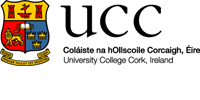Allergy prediction algorithm
| Assignment title: | Allergy prediction algorithm |
 |
| Start date: | Octover 2010 | |
| Client: | University College Cork | |
| Investigator | Dr David Nugent david.nugent@elucidare.co.uk |
Introduction
UCC researchers have developed a method of assessing the allergic status of a subject, typically to a specific allergen such as peanut, milk or egg. The method employs a number of subject-specific variables which are easily obtained from the subject, wherein the combination of variables may be correlated with risk of an allergic reaction to the specific allergen. A preferred implementation of the invention utilizes the following variables: sex, age, grade of reaction, sIgE, total IgE minus (-) sIgE and SPT. Elucidare estimates more than 150 million people worldwide suffer from one or more food allergy.
Technology
Highly accurate, allergen-specific algorithms were developed separately for each of the three most important food types (peanut, egg, milk), consisting of variables that contributed independently to the accuracy of the final model. The model, composed of 6 clinical factors (SPT (skin prick test), Serum specific IgE (sIgE), total IgE minus (-) sIgE, symptoms, sex, and age), showed a clear advantage in clinical prediction compared to sIgE only, SPT only, sIgE and SPT. Probability values are expressed on a continuous scale and give a quantified probability of likely diagnostic outcome, which is easily understandable for clinician and patient. sIgE or SPT tests are used clinically to decide if an IgE-mediated food allergy (FA) is likely to be present. These tests are less useful at levels below accepted decision points. A test that could more accurately diagnose IgE mediated food allergy without automatic recourse to food challenge would be of great benefit. Use of the Cork Algorithm on-line calculator results in a higher predictive accuracy for both patients and physicians.
Performance
The table below compares four diagnostic methods for peanut, egg and milk combined, including sensitivity, specificity, and accuracy. The Cork Algorithm shows a clear advantage in clinical prediction of allergic status compared to sIgE only, SPT only, sIgE and SPT (96% accuracy versus 61% - 81% respectively).
|
Diagnostic method |
Sensitivity |
Specificity |
Accuracy |
| sIge only | 75% | 45% | 61% |
| SPT only | 85% | 65% | 75% |
| sIge & SPT | 87% | 75% | 81% |
| Cork algorithm | 97% | 96% | 96% |
Applications
Food Allergy Prediction
Delineating a stop/continue point during the maintenance phase in Oral Immunotherapy
Prospective application of the algorithm in other paediatric centres in an experimental pre/post design
Documents available for download
| CERTAINTY – assessing allergic reactivity in a subject | |
| Global food allergy statistics - Elucidare estimates |
|
